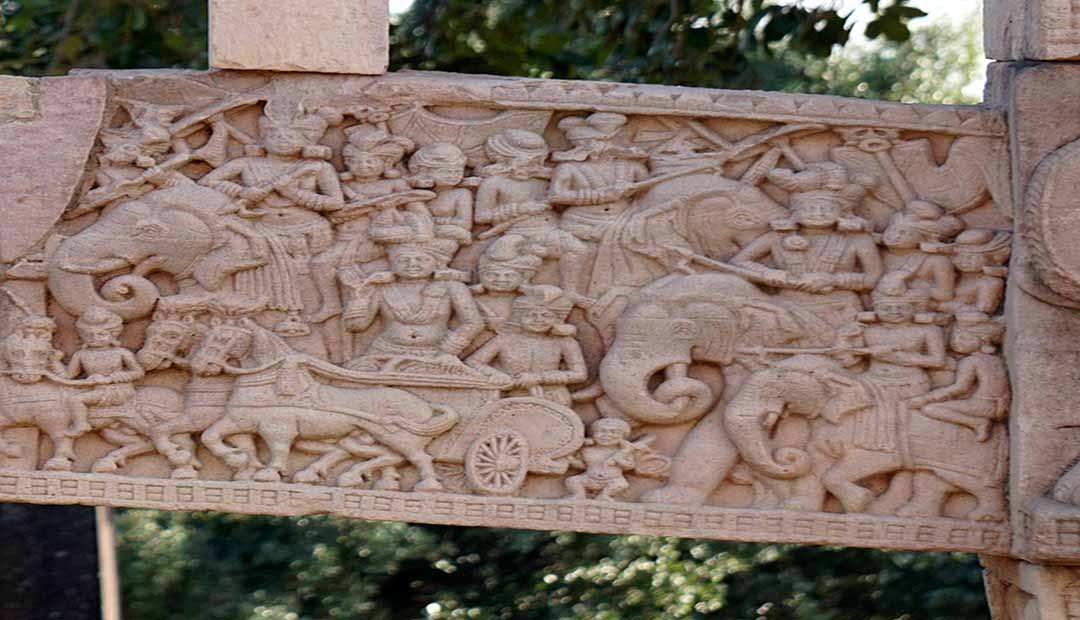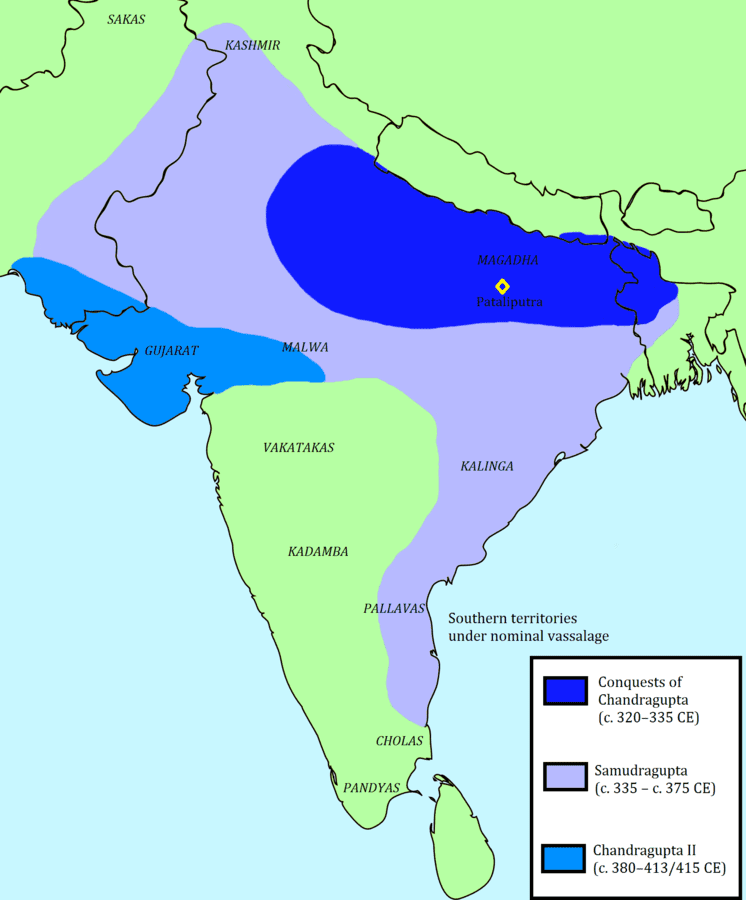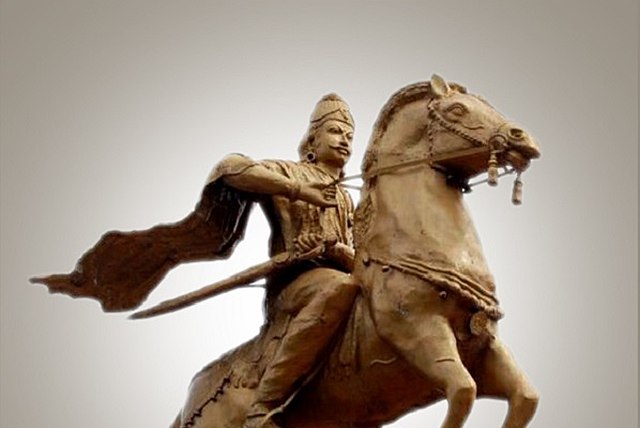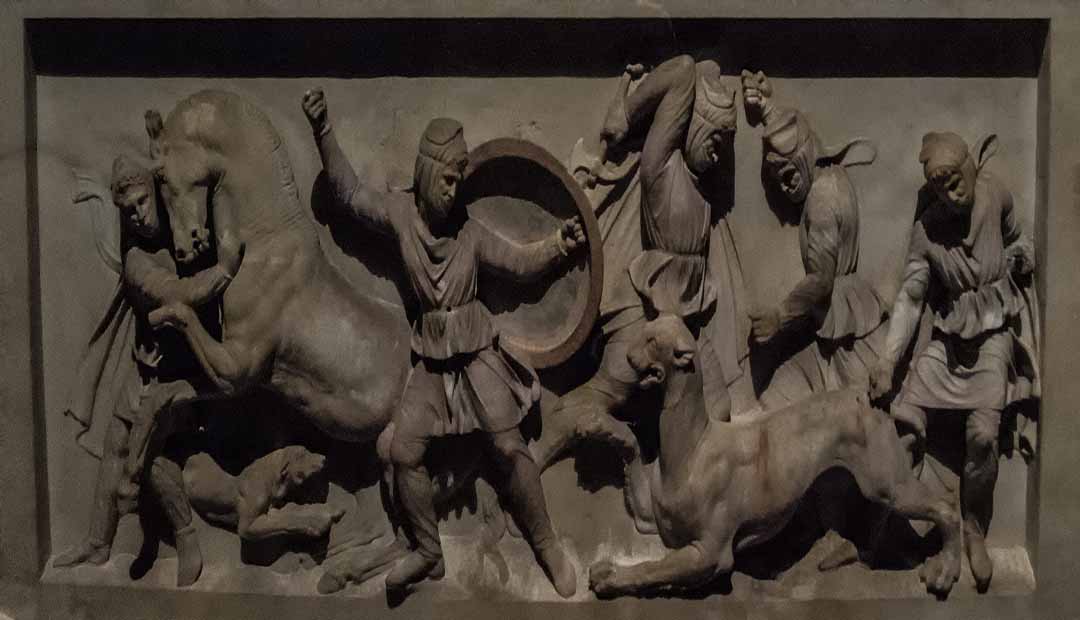
On Territorial Expansion of “Ancient Kingdom” and the Ascendance of “Magadha”
On Territorial Expansion of “Ancient Kingdom” and the Ascendance of “Magadha”
Conditions for Large State Development
Empire states were able to arise as a result of the rising use of iron in eastern UP and western Bihar starting in the 6th century BC. The warrior class now held a prominent position and was equipped with iron weapons.
The peasants were able to produce significantly more food grains than they needed for consumption thanks to the new farming equipment. The princes might gather the surplus produce to support their administrative and military demands.
The communities that had risen in the fifth century BC could likewise have access to the surplus. Naturally, these material advantages allowed the inhabitants to continue living on their property and to grow at the expense of the nearby lands. The territorial concept was bolstered by the emergence of big states with towns as their centres of operations. Rather than their jana or clan, people had a strong sense of allegiance to the janapada, or the region to which they belonged.
Enormous States of Mahajanapadas
Some janapadas may be remembered as emerging at the conclusion of the Vedic era. They did, however, start to appear more often around 500 BC as agriculture and settlement developed. Around 450 BC, Panini mentions more than forty janapadas that included even Afghanistan and south-eastern Central Asia. The majority of southern India was left out, nevertheless. The Pali writings demonstrate how the janapadas developed into mahajanapadas, or substantial states or nations. 16 of them are mentioned in these writings.
In Panini, nine of them also appear as janapadas rather than mahajanapadas. There were sixteen sizable states known as Mahajanapadas during the Buddha’s time. The majority of these sightings occurred in the upper and middle Gangetic plains, namely in the region known as the doab, which is traversed by the Ganges, Yamuna, and its tributaries.
They ranged from the north-west frontier to Bihar and were primarily located north of the Vindhyas. Magadha, Koshala, Vatsa, and Avanti appear to have been the most potent of these. The kingdom of Anga, which included the present districts of Monghyr and Bhagalpur, is mentioned first in the east. Its capital was Champa, where there is a mud fort from the 5th century BC and evidence of human occupation from that time period. Eventually, Magadha, Ang’s potent neighbour, absorbed the kingdom of Ang.
Formerly, Magadha Embraced
Magadha expanded to become the dominant state during the time, incorporating portions of the old districts of Patna, Gaya, and Shahabad. Rajgir was its first capital, and Pataliputra was its second. Both were fortified and have occupancy evidence dating to the 5th century BC.

Eight clans made up the state of the Vajjis, which was located in the Tirhat division north of the Ganges. However, the Lichchhavis were the most powerful dynasty, with Vaishali, their capital, coterminous with the town of Basarh in the Vaishali district The Purasias date Vaishali to a considerably earlier era, although according to archaeological evidence, Basarh was not established until the 6th century BC.
The empire of Kashi, which Varana including its capital, is found slightly west. The first settlements in Rajghat date to circa 500 BC, and at around the same time, mud embankments around the city.
Although Kashi first seemed to be the stain with the greatest power, it soon fell prey to Koshala’s might.
Growth and Development of the Magadhan Empire
Under the direction of Bimbisara, a ruler of the Haryanka dynasty and a Buddha-era contemporary, Magadha rose to prominence. He started the aggressive and conquest-focused strategy that culminated in Ashoka’s Kalinga War. After purchasing Anga, Bimbisara gave his son Ajatashatru, the viceroyalty of Champa, control over the territory.
Marriage alliances helped him boost his position as well. His wives number three. The first wife of Bimbisara was Prasenajit’s sister, the Koshalan king’s son and heir, and the daughter of the Koshalan king. The Koshalan bride brought Bimbisara as dowry from a Kathi village, generating a profit of 100,000, indicating that profits were paid in coins. The relationship ended Koshala’s animosity and provided Bimbisara free reign to negotiate with the other states.
Ajatashatru was born to his previous wife, Chellana, a Lichchhavi king from Vaishali, while his third bride was the child of the Madra clan leader in Punjab. Marriage ties to the various princely houses gave Magadha tremendous diplomatic importance and prepared the route for its westward and northern development.
One of the most significant adversaries to Magadha was Avanti, which had its capital in Ujjain. Bimbisara and the lo king Chanda Pradyota Mahasena clashed, but ultimately decided it was best to patch things up. Later, at the Avanti king’s request, Bimbisara dispatched the royal physician Jivaka to Ujjain when Pradyota had jaundice.
In addition, it is claimed that Bimbisara got a letter and an envoy from the Gandharan king whom Pradyota had battled valiantly against.
Therefore, in the sixth century BC, Bimbisara made Magadha the dominating power by conquests and diplomacy. His dominion is reported to have included 80,000 villages, which is a typical amount.
Rajgir Served as Magadha’s First Capital
Magadha’s first capital was located at Rajgir, formerly known as Giriva. It was protected by five hills on all sides, the openings of which were sealed off by stone walls, making it impregnable. Bimbisara ruled for fifty years, roughly from 544 to 492 BC, according to Buddhist history. His son Ajacashama succeeded him in power (492-60 BC).
After killing his father, Ajatashatru took control of the throne for himself. During his rule, the Bimbisara dynasty reached its pinnacle. He participated in two wars and began planning a third. He followed an aggressive agenda of expansion during his rule. As a result, Ka and Koshala turned against him. A protracted war between Magadha and Koshala got started.
In the end, Ajatashatru triumphed because the Koshalan king was forced to buy peace by offering his daughter in marriage to Ajatashatru and ceding control of Kashi to himself. Relationships were not respected by Ajatashatru. Despite the fact that his mother was a Lichchhavi princess, he nonetheless went to battle with Vaishali. The Lichchhavis’ status as Koshala’s supporters served as the justification.

What Made Magadha Successful?
The Magadhan empire’s expansion during the two centuries before the Mauryas rose to power is comparable to the Iranian empire’s expansion during the same time period.
During this time, a number of ambitious and industrious kings, like Bimbisara, Ajatashatru, and Mahapadma Nanda, worked to create the largest state in India. To grow their kingdoms and fortify their nations, they used every tool at their disposal, both legal and illegal.
However, this was not the sole factor in Magadha’s growth. There were some further significant ones. Magadha benefited from a favourable geographic location during the era of iron because Rajgir, the first capital of Magadha, was close to rich iron mines.
The nearby rich iron ores’ convenient accessibility allowed the Magadhan princes to arm themselves with powerful weapons that were difficult for their enemies to obtain. Iron mines are also found in eastern MP, close to the Avanti kingdom and its capital city of Ujjain. In Ujjain, where iron was undoubtedly forged and smelted around 500 BC, smiths most likely produced weapons of high quality.

